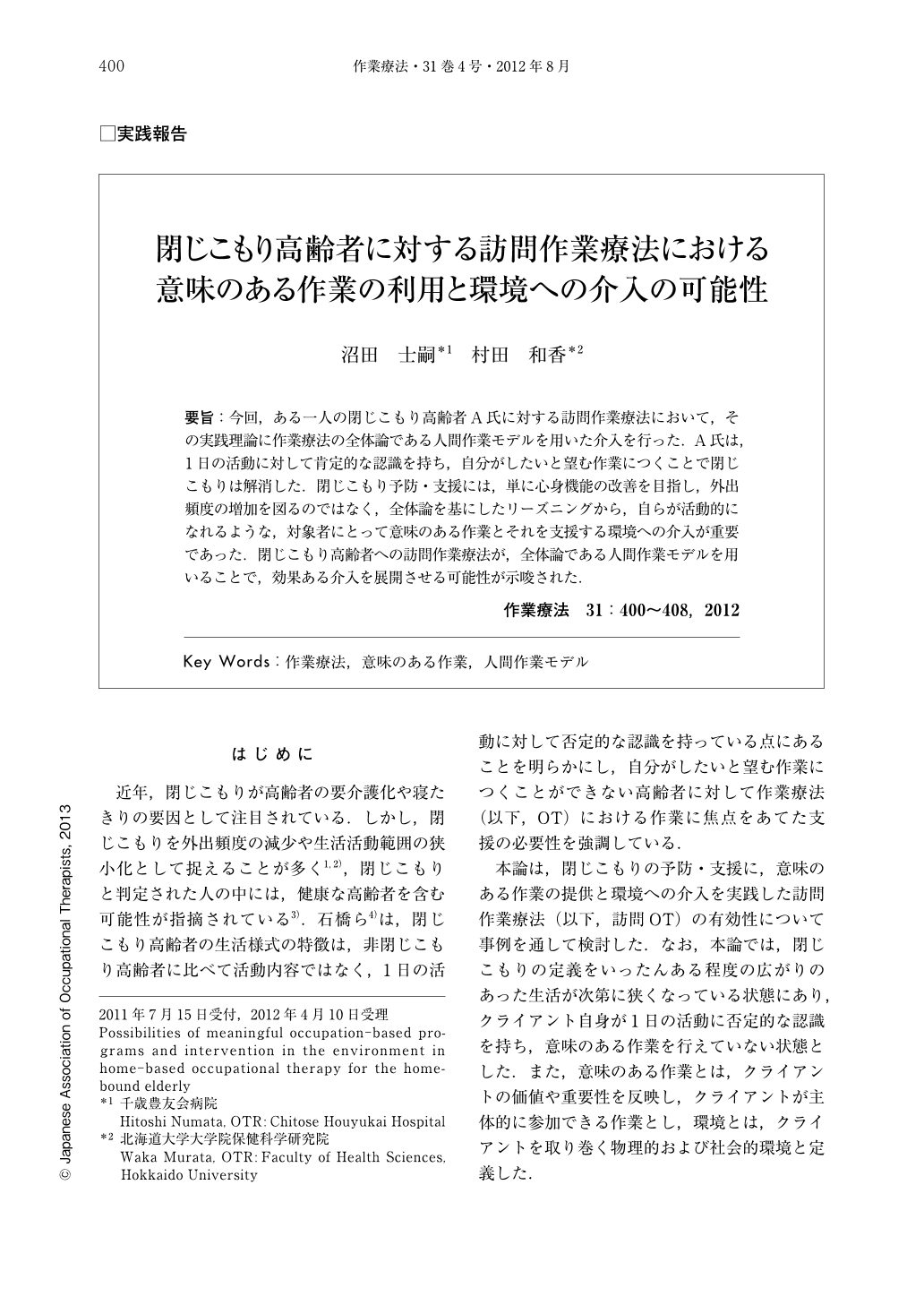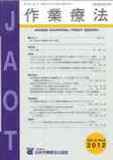Japanese
English
- 販売していません
- Abstract 文献概要
- 1ページ目 Look Inside
- 参考文献 Reference
- サイト内被引用 Cited by
要旨:今回,ある一人の閉じこもり高齢者A氏に対する訪問作業療法において,その実践理論に作業療法の全体論である人間作業モデルを用いた介入を行った.A氏は,1日の活動に対して肯定的な認識を持ち,自分がしたいと望む作業につくことで閉じこもりは解消した.閉じこもり予防・支援には,単に心身機能の改善を目指し,外出頻度の増加を図るのではなく,全体論を基にしたリーズニングから,自らが活動的になれるような,対象者にとって意味のある作業とそれを支援する環境への介入が重要であった.閉じこもり高齢者への訪問作業療法が,全体論である人間作業モデルを用いることで,効果ある介入を展開させる可能性が示唆された.
In this study, we performed an intervention using the model of human occupation (MOHO), a holistic approach to occupational therapy, in home-based occupational therapy for a homebound elderly man (Mr. A). Mr. A had a positive recognition of daily activities, and his homebound state was resolved after he was given tasks in which he wished to engage. In preventing homebound states and providing support for homebound individuals, it is important not simply to increase the frequency of going out with the aim of improving mental and physical functions, but also to perform interventions involving tasks in which the individual can actively engage and find meaningful, as well as to establish an environment that supports these tasks, based on holistic reasoning. These findings suggest that the use of MOHO, a holistic approach, may enable effective intervention in home-based occupational therapy for homebound elderly individuals.

Copyright © 2012, Japanese Association of Occupational Therapists. All rights reserved.


